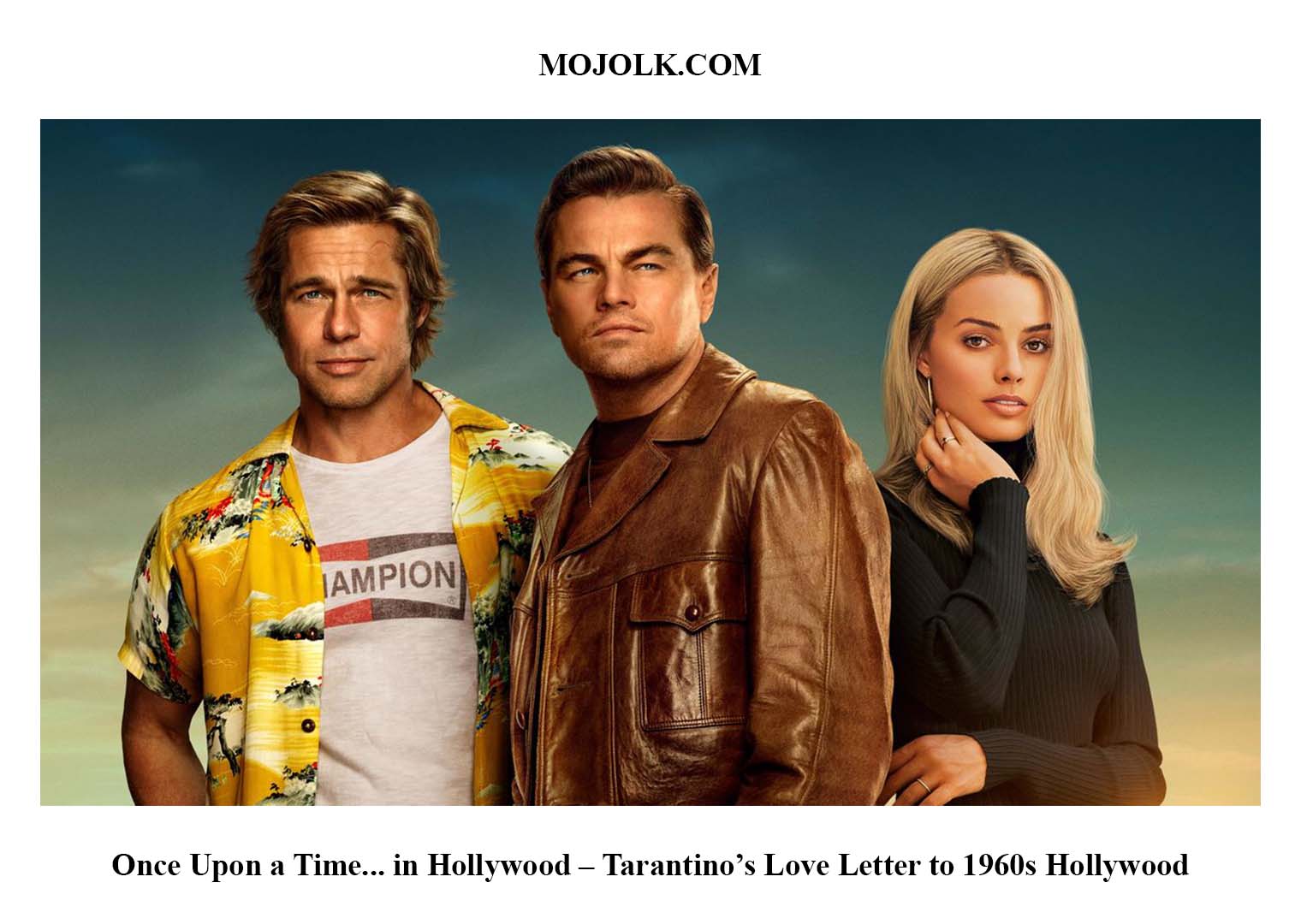Introduction – Why Once Upon a Time… in Hollywood (2019) Stands Out
Once Upon a Time… in Hollywood (2019) remains one of Quentin Tarantino’s most ambitious and nostalgic films. Released in July 2019, the movie explores the transition of Hollywood from the Golden Age to the counterculture era of the late 1960s. With Leonardo DiCaprio and Brad Pitt leading the cast, the film combines humor, drama, and historical fiction. Tarantino’s signature storytelling, rich characters, and stunning attention to detail make this film a modern classic.
Plot Summary – A Fictional Take on Real-Life Hollywood Events
The story follows Rick Dalton (Leonardo DiCaprio), a fading television star struggling to find his place in the changing Hollywood landscape. His longtime stunt double and close friend, Cliff Booth (Brad Pitt), supports him through his career downturn. Meanwhile, Sharon Tate (Margot Robbie), Rick’s neighbor, represents the hopeful and glamorous side of Hollywood. The story weaves real historical events, including the rise of the Manson Family and the brutal murders associated with them. Tarantino creates an alternate history, offering a revisionist take on the tragic events of August 1969.
Direction – Tarantino’s Nostalgic and Meticulous Approach
Quentin Tarantino directs Once Upon a Time… in Hollywood with a loving tribute to 1960s Los Angeles. His ability to recreate the cultural atmosphere of that era sets the film apart. Tarantino fills the movie with references to real-life Hollywood figures, classic films, and iconic locations. His use of long takes, nonlinear storytelling, and sharp dialogue reflects his signature style. The film’s pacing shifts between relaxed character development and bursts of intense action, creating a dynamic viewing experience.
Acting – DiCaprio and Pitt Deliver Career-Defining Performances
Leonardo DiCaprio delivers a complex and emotionally layered performance as Rick Dalton. He portrays Rick’s insecurities and fading confidence with depth and vulnerability. The scene where Rick breaks down in his trailer after a poor performance highlights DiCaprio’s emotional range. Brad Pitt’s portrayal of Cliff Booth earned him an Academy Award for Best Supporting Actor. Pitt’s effortless charisma and quiet strength create a compelling contrast to DiCaprio’s neurotic energy. Margot Robbie embodies Sharon Tate’s innocence and optimism, capturing the essence of 1960s Hollywood. The supporting cast, including Al Pacino, Dakota Fanning, and Margaret Qualley, adds depth and authenticity to the story.
Themes and Symbolism – Hollywood’s Golden Era and Cultural Shifts
The film explores themes of fame, career insecurity, and generational change. Rick Dalton’s fading stardom symbolizes the transition from the old studio system to the rise of independent and counterculture films. Cliff Booth represents loyalty and the resilience of Hollywood veterans. Sharon Tate’s presence symbolizes hope and the tragic loss of innocence. The film’s ending, where Cliff and Rick protect Tate from the Manson Family, serves as a symbolic reclaiming of Hollywood’s lost innocence.
Cinematography – Capturing the Spirit of 1960s Los Angeles
Robert Richardson’s cinematography immerses viewers in the vibrant world of 1960s Hollywood. He uses warm color tones, vintage cars, and authentic set designs to recreate the era’s atmosphere. The detailed recreation of Hollywood Boulevard and iconic locations like Musso & Frank’s reflects Tarantino’s obsession with historical accuracy. The film’s use of natural lighting and wide-angle shots enhances the nostalgic tone. Tarantino’s decision to shoot on 35mm film adds a grainy texture that mirrors classic films from the period.
Storyline – Why Once Upon a Time… in Hollywood (2019) Feels Personal
Tarantino crafts a story that blends fact with fiction, creating an emotional connection between the audience and the characters. Rick’s internal struggle to maintain relevance mirrors the broader industry shift during the 1960s. The dynamic between Rick and Cliff reflects loyalty and the changing nature of friendship in Hollywood. Tarantino’s decision to rewrite the ending of the Manson murders provides a cathartic resolution. The mix of humor, tension, and historical references makes the story both entertaining and emotionally resonant.
True Story – How Tarantino Reimagines Hollywood History
While Once Upon a Time… in Hollywood draws from real events, Tarantino takes creative liberties with the historical narrative. The portrayal of Sharon Tate and the Manson Family reflects real-life figures and events. However, the film alters the outcome of the Manson murders, presenting a fictionalized ending where Cliff and Rick prevent the attack on Tate’s home. Tarantino’s revisionist approach allows the film to reclaim a tragic moment in Hollywood history, transforming it into a hopeful reimagining.
Controversy – Mixed Reactions to the Film’s Content
The film sparked debate over its portrayal of Bruce Lee and its depiction of violence. Some viewers criticized Tarantino’s exaggerated version of Bruce Lee as disrespectful. Others argued that the film’s violent ending undermined the emotional buildup. Despite these criticisms, the film received widespread praise for its performances, direction, and attention to historical detail. Brad Pitt’s performance and Tarantino’s screenplay earned particular recognition.
Cultural Impact – Why Once Upon a Time… in Hollywood Resonates
Once Upon a Time… in Hollywood revitalized interest in 1960s Hollywood and inspired a wave of nostalgia-driven films and series. The film’s soundtrack, featuring tracks from Paul Revere & the Raiders and Neil Diamond, introduced a new generation to classic rock. Tarantino’s reinterpretation of Hollywood history influenced how filmmakers approach historical fiction. The film’s success reaffirmed Tarantino’s status as a visionary director.
Conclusion – Why Once Upon a Time… in Hollywood is a Must-Watch
Once Upon a Time… in Hollywood stands as a powerful tribute to a transformative era in film history. Tarantino’s direction, combined with DiCaprio and Pitt’s masterful performances, creates a captivating and emotionally rich experience. The film’s exploration of Hollywood’s golden era, mixed with historical revisionism, adds emotional depth. For fans of Tarantino’s work and lovers of film history, Once Upon a Time… in Hollywood remains essential viewing.

